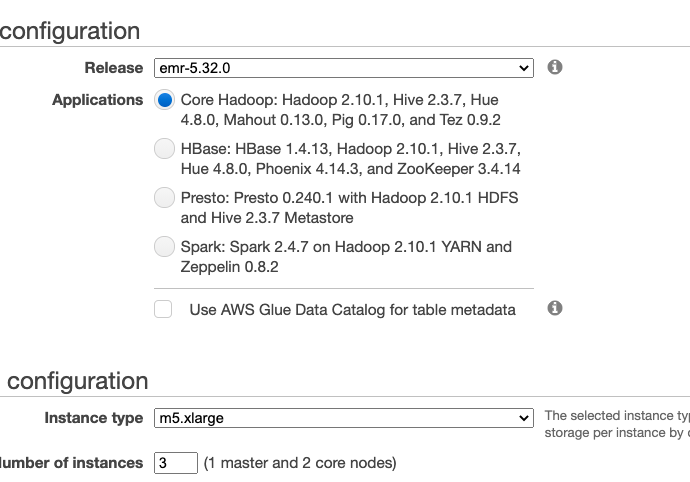How to connect Hbase to S3
Admin
- 0
- 549

Why connect Hbase to S3
Connecting HBase to S3 can provide several benefits:
- Scalability: S3 is a highly scalable object storage service that can store and retrieve any amount of data at any time. This makes it well-suited for storing large amounts of data that HBase generates, allowing it to scale horizontally and handle large amounts of data.
- Cost-effective: S3 provides a cost-effective storage solution for data that is infrequently accessed. By storing data in S3, you can save on the cost of maintaining an expensive storage infrastructure.
- Data Durability: S3 provides multiple levels of data durability guarantees, which can ensure that your data is safe and can be retrieved in case of hardware failures.
- Data Accessibility: S3 can be accessed from anywhere with an internet connection, which makes it easy to access your data from different locations and devices.
- Backup and Archiving: S3 can be used as a backup and archiving solution, which can help to ensure that your data is safe and can be easily restored in case of data loss.
- Flexibility: S3 allows you to store any type of data, including structured and unstructured data, which makes it a flexible solution for HBase.
- Data processing: S3 can be integrated with other big data tools such as Apache Pig and Apache Hive, which allows the processing of the data stored in S3 in a more efficient way.
What is Hbase
Apache HBase is a distributed, column-oriented database that is part of the Apache Hadoop ecosystem. It is designed to store and manage large amounts of data, and it is particularly well-suited for handling unstructured and semi-structured data.
One of the key features of HBase is its ability to scale horizontally, which means that it can easily handle large amounts of data by adding more servers to the cluster. HBase also provides fast random read and write access to data, which makes it well-suited for use cases such as real-time data processing and analytics.
HBase is built on top of the Hadoop Distributed File System (HDFS), which provides a high level of fault tolerance and data durability. Data is stored in tables, which are composed of rows and columns, similar to a traditional relational database. However, unlike relational databases, HBase does not have a fixed schema and can handle changes in the data structure.
HBase also provides a rich set of data management features, including support for versioning, data replication, and data compression. It also provides a Java API for interacting with the data stored in the tables, and it can be integrated with other big data tools and frameworks, such as Apache Pig and Apache Hive.
What is S3
Amazon S3 (Simple Storage Service) is a highly scalable, secure, and durable object storage service provided by Amazon Web Services (AWS). S3 enables users to store and retrieve any amount of data from anywhere on the web. It is designed to store and retrieve data and to scale and grow as needed.
S3 is a highly durable service, it stores multiple copies of data across multiple devices and facilities, which ensures that data is safe and can be retrieved in case of hardware failures. S3 also offers different storage classes, depending on how frequently data is accessed, which allows users to choose the most cost-effective storage option for their use case.
S3 provides a simple web-based interface, which enables users to upload and download files, create and manage buckets (i.e. containers for storing data), and set permissions and access controls on data. S3 also provides an API, which enables developers to access data programmatically, as well as integrate it with other services and tools.
How to connect Hbase to S3
To connect HBase to S3, you can use the Hadoop S3A connector. The connector allows HBase to read and write data to S3. There are also other connectors but this is the only one actively maintained by the Hadoop team.
Here are the steps to connect HBase to S3:
- Copy the S3A connector dependencies to your HBase lib folder.
- hadoop-aws JAR
- aws-java-sdk-bundle JAR
- Versions of hadoop-common and hadoop-aws must be identical.
- Set endpoint, root dir, and keys as follow. Use your endpoint and Bucket name. Make sure the root dir starts with s3a://
<property>
<name>fs.s3a.endpoint</name>
<value>http://s3.us-east-1.amazonaws.com</value>
</property>
<property>
<name>hbase.rootdir</name>
<value>s3a://Bucket Name</value>
</property>
<property>
<name>fs.s3a.access.key</name>
<value>ACCESS_KEY</value>
</property>
<property>
<name>fs.s3a.secret.key</name>
<value>SECRET_KEY</value>
</property>
4. Configure WAL logs location. Currently, because S3 does not fully support File/Folder rename, WAL logs need to be stored on a local HDFS.
<property>
<name>hbase.wal.dir</name>
<value>hdfs://</value>
</property>
Alternative
If you don’t want to configure HBASE, you can use EMR from Amazon AWS. Amazon Elastic MapReduce (EMR) is a fully managed big data platform service from Amazon Web Services (AWS) that makes it easy to process large amounts of data using open-source tools such as Apache Hadoop, Apache Hive, and Apache Spark. EMR allows you to spin up a cluster of EC2 instances and run distributed data processing jobs on them. It also provides built-in integrations with other AWS services such as S3, DynamoDB, and Redshift, making it easy to move data in and out of your EMR cluster.

You can read more about EMR: https://aws.amazon.com/emr/
